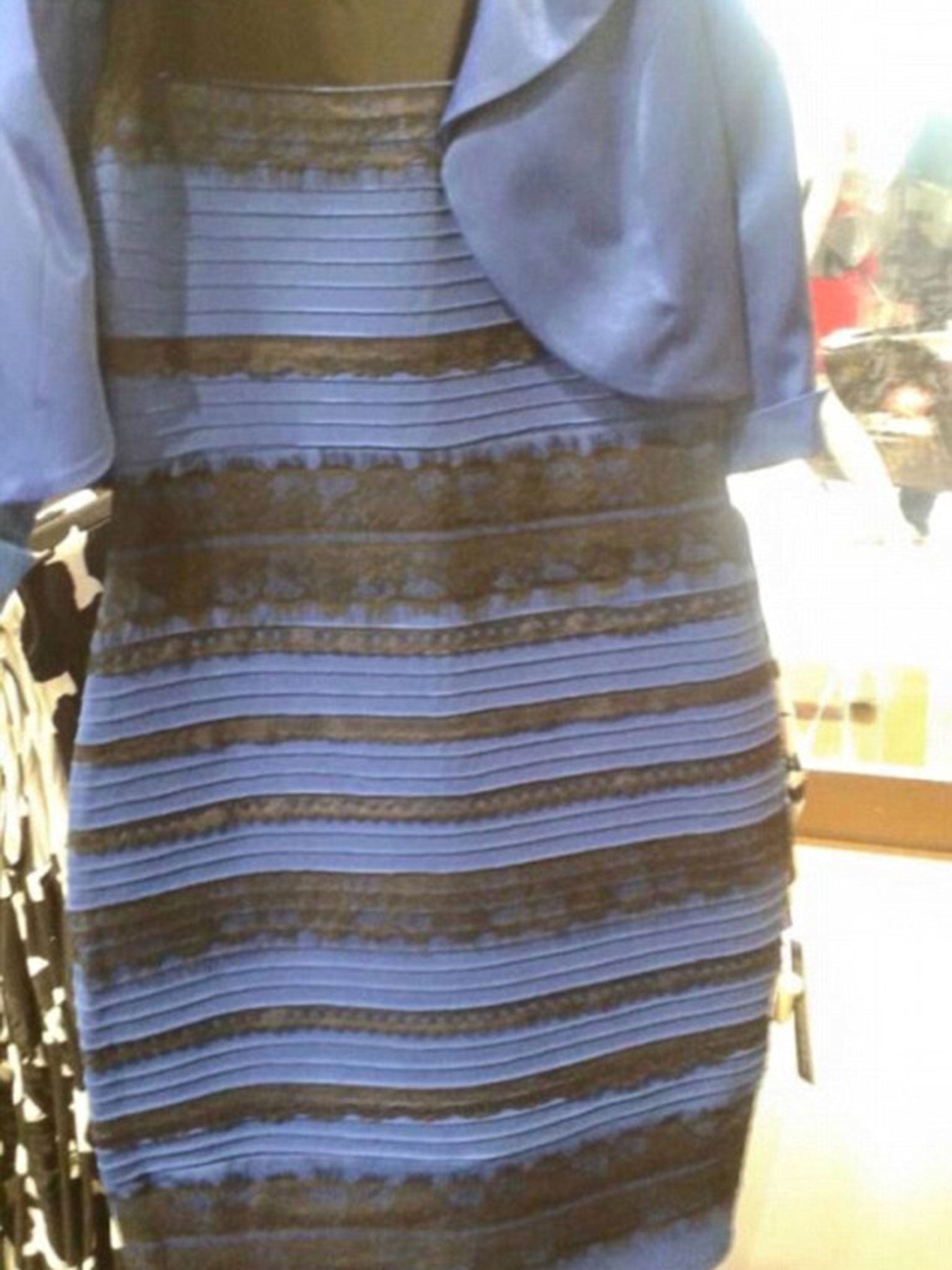Remember #TheDress? Brain scientists now see the internet meme as invaluable research tool
Thought The Dress was a flash in the internet pan? Not so, say brain scientists. After months of research, they say it will help them understand how the brain turns data into perception and cognition

Internet memes: here today, gone tomorrow, replaced by whatever new comedy pet antics, political gaffes or celebrity hubris are tweeting up a storm by lunchtime.
Not so, however, The Dress. You remember #thedress – in February, a snap of a lacy frock appeared online that divided the population vehemently over what colour it was. Offices rang to the sound "black and blue!", "white and gold!" Social media convulsed. We fretted that our perception of the world was wonky. Then science explained it was all a trick of the light, and we moved on. Well – some of us.
The dress more seriously caught the imagination of the scientific community, and the journal Current Biology is now publishing three academic papers on it. So has a silly meme provided genuine scientific insights?
Bevil Conway, of Wellesley College and the Massachusetts Institute of Technology (MIT), insists it has. Despite his initial scepticism – "I thought, this is a pretty crummy photograph and I don't want to get caught up in social media hype" – he now argues that the dress will be an invaluable research tool for years to come. "These three papers are the tip of the iceberg. The dress is going to continue to be a very important probe for understanding the fundamental problem of how the brain turns data into perception and cognition: how do you turn the stuff that hits your senses into something actionable, a perception or thought?"
The three research papers take their own angles on this. A submission by Michael A Webster of the University of Nevada suggests that the confusion could never occur with, say, a red dress, because there is a "special ambiguity" to blue. Humans mistake the actual blueness of objects for blue light – shining down from the sky – and our brains adjust accordingly, assuming something that appears blue should be white. Other colours, such as red, are not so altered by the presence of natural light, and so are more stable.
Meanwhile Karl Gegenfurtner, of Giessen University in Germany, further defined the exact shade participants perceived, and found that there was actually a continuum – from dark azure through pastel blue to totally pale – rather than the simple initial white/gold or blue/black dichotomy.
Conway's studies concurred – and he himself sees the dress as pale blue and brown. But after surveying 1,400 people, he concluded that actually, most of us do clump into the blue/black or white/gold camps. No wonder we got shouty and tribal about it.
"This is one of the first [documented] instances, if not the first, of people looking at exactly the same physical thing and seeing very different colours," says Conway. "The dress is a very powerful tool for understanding how the brain resolves ambiguity. All images that hit your retina are ambiguous, so there's a lot of [scientific] interest in how internal models shape how you experience the patterns of life. We really thought everybody had the same internal model." Not so. And, intriguingly, his research finds significant correlations between age, gender and colour perception: older people and women are likely to have auto-correcting internal models that tell the brain the dress is white-and-gold. But why?
"All the objects you look at are contaminated by the light source," explains Conway. "The sky is blue, it beams down on objects, the objects are contaminated by blue light. The other is incandescent light – direct sunlight or traditional electric lights – which has a bias to orange."
The more you've been exposed to one – blue or orange – the more that will have affected your internal model, which learns to discount that bias. Ergo, if you've been more exposed to daylight in your day-to-day life, you discount blueness and see the dress as white/gold; if you've been more exposed to artificial light, you discount orangeness and see the dress as blue/black. And – apparently – that does map to gender and age: "Older people and women are more likely to spend their waking hours during daylight," claims Conway. Therefore, for them, the dress is white/gold. I guess that I'm typical of my gender then – because it's obviously white and gold, right?
Join our commenting forum
Join thought-provoking conversations, follow other Independent readers and see their replies
Comments
Bookmark popover
Removed from bookmarks